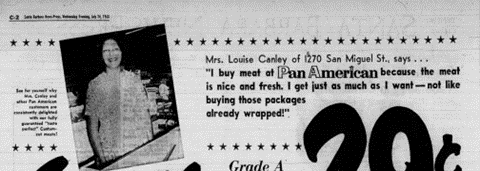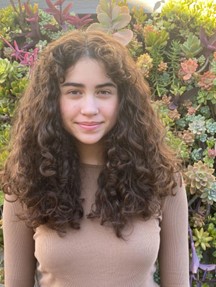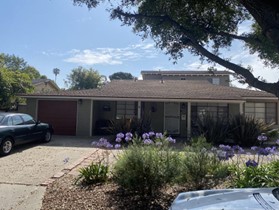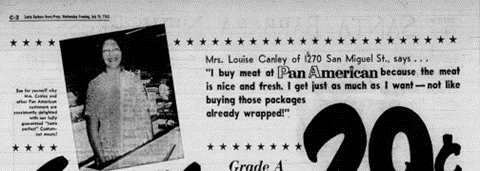By Mayson Canley
Hello, I’m Mayson Canley, and I began interning for the Santa Barbara Trust for Historic Preservation during the summer of 2023 in a collaboration project with the City of Santa Barbara. With the guidance of City of Santa Barbara Architectural Historian Nicole Hernandez, I completed over a dozen historic significance reports detailing the history of each building in Santa Barbara and defining how each meets criteria for historic designation due to their significance to the African American/Black community. Among these buildings were churches, houses, businesses, and commercial spaces. To write these reports, I accessed newspaper archives, old city directories, Sanborn maps, original drawings and permits, and more, giving me multidimensional and comprehensive details of every property.
As a high school junior, I’m younger than the average intern, but my personal connection to Santa Barbara’s Black history and background in creative writing helped me maximize this opportunity. I found this position with the help of Healing Justice Santa Barbara, a nonprofit organization committed to preserving African American/Black history. I found them by chance on Instagram and reached out, intrigued by their mission and hoping to archive some of my own family’s history. After exchanging emails and eventually meeting in person, they recommended me for this position.
Since history is easily one of my favorite subjects in school, this primary source work was an enriching opportunity. I’ll admit that prior to this experience, I never really thought about the significance of buildings. However, learning about architectural styles and how they reflect different eras, housing movements, and patterns of discrimination against minorities through time really captured my interest.
I am from Los Angeles, but this project was impactful on a personal level. My great-grandparents settled in Santa Barbara in the 1950s after escaping race-based violence in Arkansas. When a group of white men threatened my great-grandfather LV and demanded he relinquish his truck, LV stood up for himself and fought back. However, in the Jim Crow South, his actions were practically a death sentence, so my great-grandparents had no choice but to pack up their life and flee. Ever since then, the Canleys have helped Santa Barbara’s Black community evolve.
Over the summer of 2023, I drove up to photograph all the properties I would be writing about. My grandpa, Donald Canley, accompanied me, and it was so cool to see him recognize the houses, history, and people I would be researching. For example, he told me that Dr. McMillan, Santa Barbara’s first and most prominent African-American physician, treated my Pop Pop and his seven siblings when they were kids. I learned that the doctor’s home in the Mesa neighborhood, at 338 Cooper Road, made him one of the first African American/Black residents in the area; he had been denied housing in other areas like Mission Ridge Road due to his race. I also reported on the first office building he had designed for his practice at 111 W. Arrellaga St. (in the Mid-Century Modern style). With so many of their childhood memories being recognized and preserved, my extended family has been very invested in what I’ve been learning.
During my internship, I decided to use my newfound research tools, particularly the newspaper archives, to search up my own family. I found several gems: mention of my grandpa as class president when he was in sixth grade at La Cumbre Junior High; birth announcements; and even a picture of my great-uncle Lavell helping the mayor announce June as “Recreation Month” in 1958. However, one discovery stood out in particular — a 1963 advertisement for the Pan American grocery store that featured both a photograph and a quote from my great-grandmother Louise. She was without question the beloved matriarch of my family, and she passed away fairly recently, so it was really special to find this little piece of her story that no one knew about.
The research skills I’ve learned during this process have already had a positive impact in other areas of my life. I am currently in an AP research class that requires identifying, summarizing, and synthesizing information. After spending so many hours piecing together a story from articles, family information, pictures, and other documents, I was well-prepared to integrate the scholarly information this class requires.
I’m so grateful I was given the opportunity to do the important work of preserving the heritage of this vibrant, resilient, and inspiring community.
SBTHP manages an endowed student internship program called the Higman Internship. The internship funds projects within the organization, and also funds work with external partners throughout Santa Barbara County that support the organization’s mission. SBTHP has supported the City of Santa Barbara’s African American Black Context Statement since its development and is pleased to fund an internship that makes progress toward the implementation of this important plan.





Congratulations, Mayson, for the important research you’ve done and to SBTHP for sponsoring such an important internship. This was fascinating to read about the African- American influences here in our community. Great work, Mayson, and thank you!